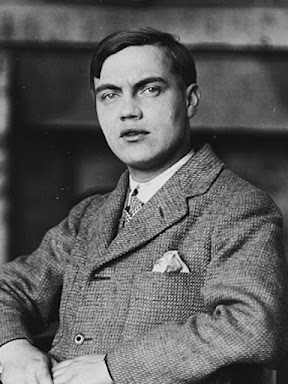Hubert Parry’s Shulbrede Tunes have long been a personal favourite. I found a dusty copy of the score in a music shop more than half a century ago and have enjoyed trying to play them ever since. The Tunes date from 1914, shortly before the start of the First World War. The composer was in residence with his daughter, Dorothea, at Shulbrede Priory in West Sussex. The idea behind it was to sketch some of the residents as well as the architecture and the entertainments. The opening Shulbrede is a portrait of Parry himself, with its intensely romantic pianism. This is followed by a tribute to his granddaughter Elizabeth. His other grandchild, Matthew, is more serious than would seem appropriate for a wee laddie. The house and gardens are represented by the shadowy Prior’s Chamber by Firelight and the idyllic pastoral, In the Garden with Dew on the Grass. The Bogies and Sprites that Gambol by Nights is a haunting little scherzo. Children’s Pranks may refer to father and grandfather’s shenanigans, rather than those of the younger members of the family. The robust Father Playmate is Parry’s son-in-law Arthur Ponsonby. Dolly No.1 and Dolly No.2 present two facets of his daughter, Dorothea.
The optimistic and largely cheerful
Shulbrede Tunes is to Parry what the Wand of Youth Suites are to
Elgar: a reflection on childhood and lost innocence, reflected on in maturity. Sadly,
this serene evocation of an Edwardian family would be lost during and after the
catastrophic Great War.
Howell provides a sense of
wistfulness and confidence to these pieces. It is exactly their interpretive
requirement.
The main event on this present CD is the Sonata No.1 in F major, which was published in 1877. I repeat some of my observations made for Richard Deering’s recording. It is possible that this Sonata may have begun life as a “sonatina” written three years previously. This “original” has been lost. The Sonata was dedicated to George Grove, the then Director of the Royal School of Music. It was originally to have been Lady Pembroke, but at that time, Parry’s relationship with her was “strained.”
The Sonata is presented in four
movements and lasts for about 22 minutes. Formally, Beethoven would seem to be
the model, although the listener will be aware of the influence of other
composers: Mendelssohn, Chopin, and Schumann. The pastoral Non troppo
allegro is followed by a short, skittish scherzo which suggest Sprites
that Gambol by Night from the Shulbrede Tunes. The Andante
is a perfectly stated barcarolle that nods to Schubert. Howell has written that
the finale could have been written by Cramer or Dussek. It is easy to detect a huntsman’s
galop in these pages.
It could be argued that this
Sonata is “regressive” or “derivative.” Despite this implied criticism, I feel
that this is a successful work that appeals to the mind and the heart. Formally
it is a splendid example of the genre.
Added value to this CD is the premiere recording of Parry’s Sonnets and Songs Without Words Book 1 dating from around 1869. It was his earliest piano publication. The set opens with a delightful Pastorale. The liner notes refer to it as a “modest piece of fashionable tone painting.” More Theocritean than cow leaning over the gate, I think. Owlet is quiet and reflective: it is more concerned with mood than avian description. It is perfect in effect and execution. Strangely, Gnome is not a scherzo, but a thoughtful meditation that is “curiously original and even characteristic.” The final number is a Lied which owes a debt to Mendelssohn with its balance of a “rippling” opening section with a hymn-like trio. These four pieces are truly lovely and are an important addition to Parry’s catalogue of recorded music.
The liner notes, produced by the present soloist, give a thorough, non-technical analysis, as well as providing helpful context and relevant biographical information. There are details about the soloist as well as references to his many recordings. The CD cover features an antique print of Shulbrede Priory, Sussex dating from1784.
This is a fine recording, with superb playing. I have noted before that the key to the successful interpretation of Parry’s piano music is the ability to synthesize the influences that lie behind each composition with the unique contribution from Parry himself. In every case Howell provides this fusion of history and progress.
Track Listing:Charles Hubert Hastings Parry (1848-1918)
Sonata No.1 in F major (pub.1877)
Sonnets and Songs Without Words: Book 1 (1868, pub. 1869)
Shulbrede Tunes (1911-13, pub.1914)
Christopher Howell (piano)
rec. 4 June 2021; 9 July 2021, Studio of Griffa e Figli, Milan, Italy
Da Vinci Classics C00759









